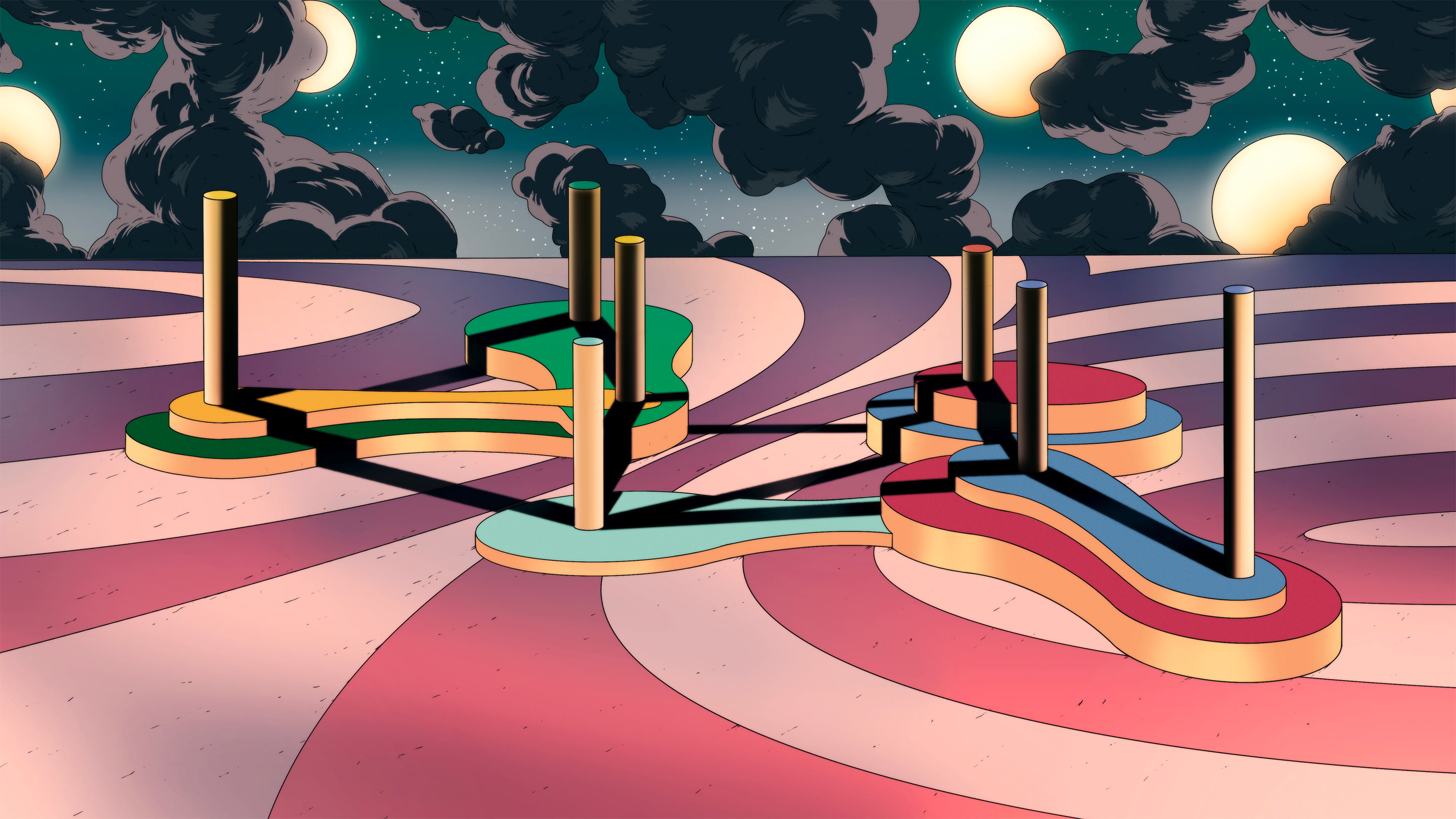How Big Data Carried Graph Theory Into New Dimensions

Graph theory isn’t enough.
The mathematical language for talking about connections, which usually depends on networks — vertices (dots) and edges (lines connecting them) — has been an invaluable way to model real-world phenomena since at least the 18th century. But a few decades ago, the emergence of giant data sets forced researchers to expand their toolboxes and, at the same time, gave them sprawling sandboxes in which to apply new mathematical insights. Since then, said Josh Grochow, a computer scientist at the University of Colorado, Boulder, there’s been an exciting period of rapid growth as researchers have developed new kinds of network models that can find complex structures and signals in the noise of big data.
Grochow is among a growing chorus of researchers who point out that when it comes to finding connections in big data, graph theory has its limits. A graph represents every relationship as a dyad, or pairwise interaction. However, many complex systems can’t be represented by binary connections alone. Recent progress in the field shows how to move forward.
Consider trying to forge a network model of parenting. Clearly, each parent has a connection to a child, but the parenting relationship isn’t just the sum of the two links, as graph theory might model it. The same goes for trying to model a phenomenon like peer pressure.
Now we know that the network is just the shadow of the thing.
Josh Grochow, University of Colorado, Boulder
“There are many intuitive models. The peer pressure effect on social dynamics is only captured if you already have groups in your data,” said Leonie Neuhäuser of RWTH Aachen University in Germany. But binary networks don’t capture group influences.
Image: Mike Hughes for Quanta Magazine
